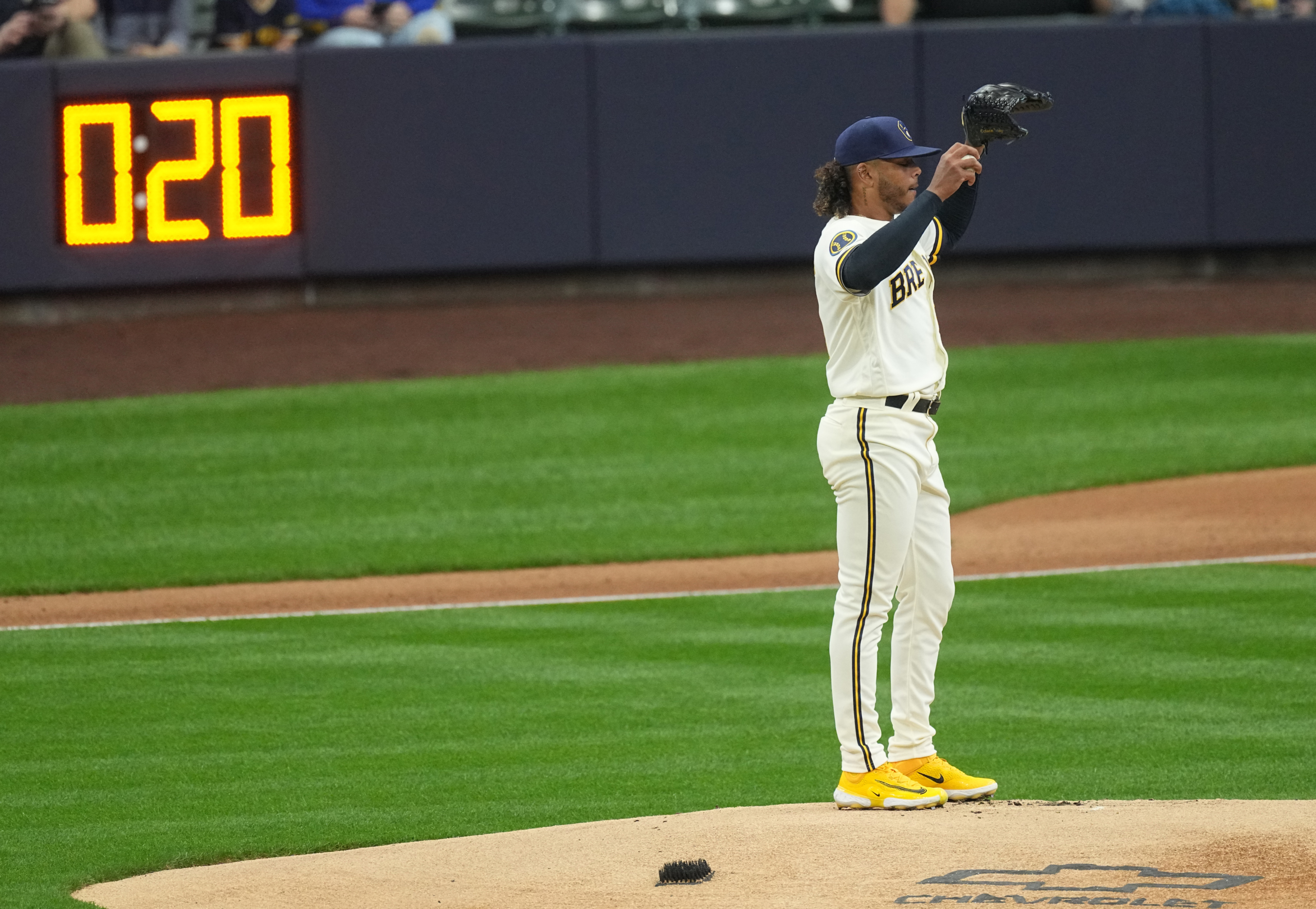The first pitcher to commit a pitch clock violation in MLB history shrugged it off personally but also offered a take on the new rules that could be construed as a warning — at least when it comes to eventful storylines worth watching all season.
“It’s tough, man. It’s tough, this pitch count,” Marcus Stroman, the Chicago Cubs’ Opening Day starter, said. “It’s a big adjustment. I don’t think people really realize that.
“I think it’s messing with a lot of guys’ pre-pitch routines, which can ultimately affect how they pitch as well.”
Just ask the New York Mets’ Carlos Carrasco. A few days after Stroman made history, so did Carrasco — getting charged with a violation before he delivered his first pitch of the game. He got another one later during the 10-0 loss to the Milwaukee Brewers as the Mets racked up more clock violations (four, including two by hitters) than they did hits (three) in the game.
“Everybody’s going through an adjustment period,” Mets manager Buck Showalter said. “It’s umpires. It’s clock operators. It’s us. It’s the teams we’re playing. You’d better figure it out because it’s not going away.”
And that’s the bottom line, right? Well, the other one — the one that’s not about a wonderful, briskness of pace that has shaved half-hour off the average time of game.
Fans become part of MLB’s rules changes
The rules changes this year might be, collectively, the most dramatic in baseball history — between the infield-shift ban, larger bases/pickoff limits and pitch clock.
All make this a must-watch season across the baseball landscape, from April through October.
And the pitch clock, of all things, might provide every bit of the entertainment that all those extra ground-ball hits and all that breakneck base-running we’ve seen already will provide.
No?
Consider the interactive fan element of it that doesn’t come with the other rules changes, introduced by Seattle Mariners fans in their opener against the Cleveland Guardians, with no score in the eighth inning, and Cleveland reliever James Karinchak.
Karinchak, you might recall, is the guy who likes to toss the ball up in the air a few times, adjust his jersey, etc., between pitches — making him potentially one of the pitchers most impacted by the 15- and 20-second limits between pitches this year.
If you didn’t recall, Seattle fans, certainly did, by the time Karinchak started off J.P. Crawford 0-2, then asked for a new ball and flipped it a few times — at which point fans began jeering and counting down the clock.
Until it ran out. The crowd called the violation a split second before the umpire did. Ball 1.
The next pitch went to the backstop, and Crawford eventually drew a walk. The crowd stayed in it. And one out later came a wild pitch and another walk, to Kolten Wong.
Then a rattled Karinchak gave up a home run to Ty France for the only runs in the game.
“It did affect the game,” Mariners manager Scott Servais said.
What the new pitch-count rules are all about
Think other MLB fan bases didn’t take note? Think the new pitch clock rules are only about this glorious, quick-pace new normal in baseball?
It’s about everything from pitchers finding enough time to flip the ball and breathe between pitches to the people at stadiums running the clocks right and superstar hitters calling time before running the clock too low without paying attention and getting rung up — and, in Manny Machado’s case Tuesday, subsequently becoming the first player ejected for arguing a violation.
“It’s just another aspect of the game,” said Brewers ace Corbin Burnes, who seemed to throw to first at will throughout his Opening Day start and was charged with no clock or step-off violations.“In our clubhouse we view it as something we can use as a tool for us to keep [hitters] uncomfortable.
“It’s all about how you look at it. If you look at it as something where, ‘Oh, I’ve got to be rushed; I’ve got to be hurried,’ then it can work against you. But if you want to use it to your advantage and use it as a tool, then you can use it as something to help you and make guys uncomfortable.”
Stroman sees the other side of it, even if he got the better of Burnes with six scoreless innings that day.
“I do feel super rushed out there at times,” said Stroman, whose violation occurred on a 1-2 pitch to Christian Yelich in the third inning of his opening start, contributing to a walk. “Even between innings, I’m running out there very early to warm up in between. A foul ball comes up and you don’t even have time to rub the ball up.
“I watch [the clock]. I’m very conscious of it. So as I’m looking at the hitter, I’m also in my peripheral, I can see it,” he added. “So I’m watching the pitch clock count down, sometimes holding till one second; sometimes I’m going quick. And I’m a big breather as well. Sometimes I’m not able to catch my breath and find my proper breathing that I do before pre-pitch. So It’s definitely been a dynamic that’s going to be tough on some guys.”
And it’s only April.
Wait until September and October.
Gordon Wittenmyer covers Major League Baseball for Sportsnaut. You can follow him on Twitter at @GDubCub.

